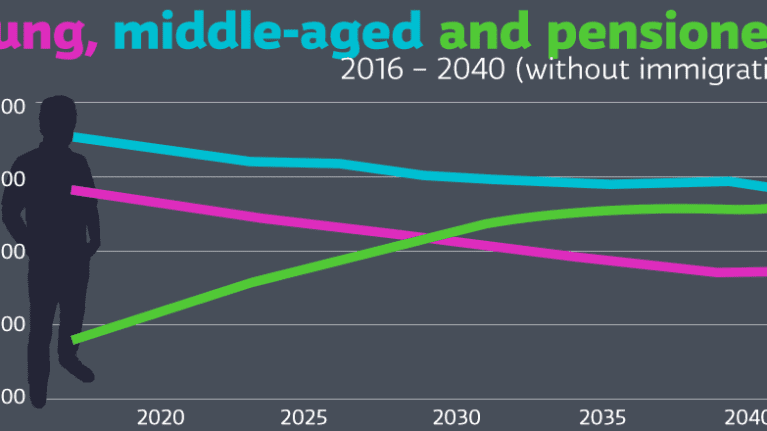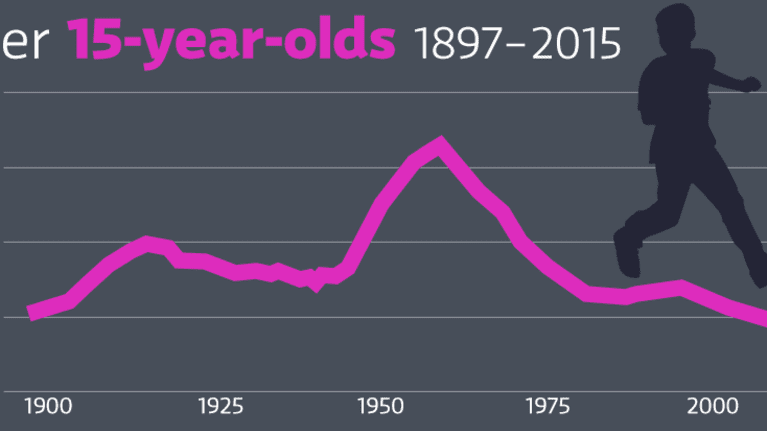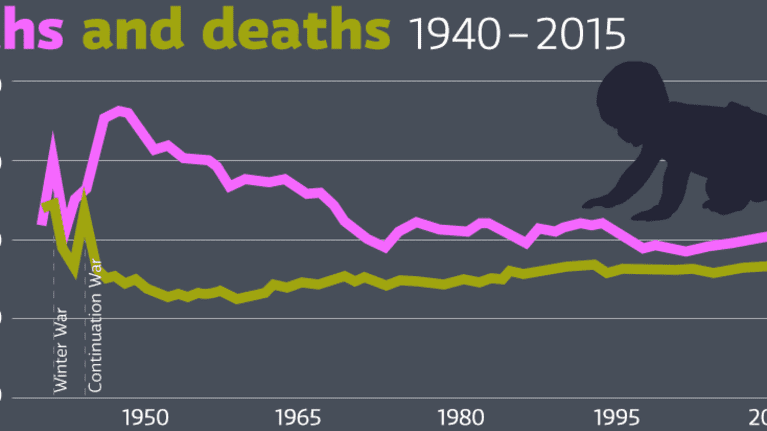The population structure of Finland is changing as births are down, old people are living longer and native-born Finns are moving away. Yle compiled four graphs based on data from the state-owned number cruncher Statistics Finland that outline the developments we can expect to see in the near future.
1. A pensioner boom will set in around 2029

Drawing from 2014 statistics, Statistics Finland predicts that the number of pensioners will exceed the number of 18-40 year olds by as early as 2029 in Finland, a trend that will continue for at least the two decades that follow. It will be matched by a corresponding long-term decline in the number of young and middle-aged workers.
The projected changes are based on Finland's current population structure. The baby boom generation born after Finland's wars are retiring en masse, and are likely to live longer thanks to improved medical services.
2. The last time there were this few children was in 1896

Some 120 years ago there were about as many children under 15 as there aretoday, despite the fact that there were only 2.5 million Finns then, less than half of today's national population.
Lowered fertility accounts for a significant portion of this vast drop. In 1896 Finnish women gave birth to an average of 4.6 children. Today that figure is 1.65 children. Statistics Finland reports that since 1969, the birth rate has been below the population regeneration rate, which is 2.1 children per woman. No dramatic changes have been recorded in average family size since the 1970s.
Preliminary data from Statistics Finland shows that in the first six months of this year 26,517 children were born. In relation to the time period in question, this number is the lowest it has ever been in the history of Finland as an independent state.
The number of births in the first half of 2016 was 753 lower than that of deaths, which takes us to the next graphic.
3. Mortality rate will overtake the birth rate
Finland's mortality and natality rates have been steadily approaching each other since the wars, as shown in the accompanying graph. In 2015, there were only 2,980 more births than deaths in Finland.
As a matter of fact, Finns are currently moving abroad at such a rapid pace that the country's end-of-June population of 5,493,577 would cease to increase already this year, if it were not for immigration.
4. Native-born population begins its decline

Finland's population increase – meaning the sum of births, deaths and net immigration – is in the black thanks solely to people moving here from abroad. In 2015 Finland's total population increase was a mere 370 people.
Statistics Finland estimates that growth will be sparse in the future, too. Relying on statistical data from 2014, Statistics Finland anticipates that only 36 municipalities will see an increase in population in the year 2040, if immigration is excluded from the equation.
